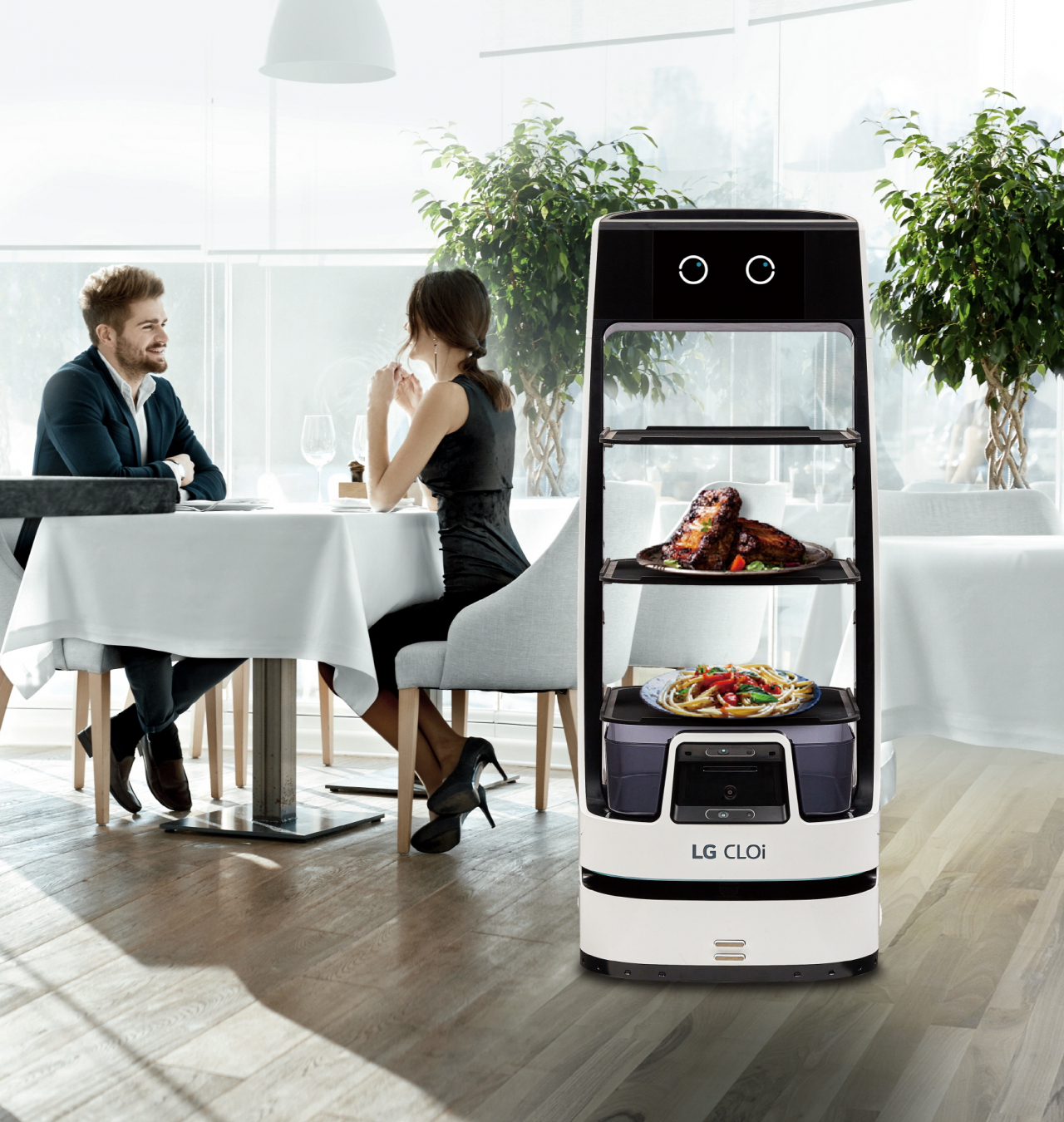[KH Explains] Chinese server robots gobbling up Korean market
Cheaper pricing, lack of regulations or early support in robotics field fuel Chinese expansion
By Jie Ye-eunPublished : Aug. 15, 2023 - 15:09

Since the outbreak of COVID-19, local restaurants and hotels have been increasingly adopting server robots, and almost seven out of 10 are believed to be from China.
According to industry estimates, there were about 5,000 server robots last year, a surge from some 3,000 units in 2021. This year, the figure is expected nearly to double to 10,000 units.
In a recent report, the Korean Association of Robot Industry said China-made robots made up about 70 percent of the total number of server robots sold last year.
Business owners say cheaper prices constitute the most important reason many of them purchase or rent a China-made service robot to substitute human employees and help them reduce costs overall.
Server robot prices vary widely depending on their functions and specifications, ranging from 10 million won to 100 million won ($7,500-$75,000). On average, China-made robots are typically more than 20 percent cheaper than Korea-made robots. Due to the significant initial costs, many of the robots are sold on monthly rental plans for about 500,000 won per month.
“As a buyer, you have no choice but to consider cost-effectiveness rather than patriotism,” said a business owner who operates three robot servers at his bar in southern Seoul.
Cheaper prices backed by state subsidies
The price competitiveness of China-made robots can be attributed to the Chinese government’s big push to nurture its robotics industry over the past decade. Industrial clusters specialized in producing robots are located in areas such as Shenzhen and Dongguan to offer tenant companies hefty incentives, including a 10 percent refund on facility investments and subsidies of up to 15 percent of sales.
The Korean government also offers subsidies, but the key beneficiaries are buyers, not developers, because the policy aims to expand the market itself by accelerating the wider adoption of robots across industries.
Under the plan, small- and medium-sized companies can apply for the subsidy program and get funding worth up to 70 percent of the cost of robot purchases regardless of the origin of the robots.
“If we offer subsidies to Korea-made robots only, it would be a violation of the fair trade rules of the WTO,” an official from the SMEs Ministry said on condition of anonymity.
The official added the ministry changed its subsidy requirements this year to offer subsidies only for robot purchases, considering that many of the Chinese robot makers are doing business based on monthly rental plans. But skepticism has grown over the effectiveness, as many Korean robot makers are also rolling out their own rental service plans to ease the cost burden for consumers.
“We are doing extensive research into various cases in the market and seeking ways to better evaluate the qualifications of robot makers, such as after-sales service quality. A revised plan is likely to come out later this year,” he said.
Lack of regulations
Industry watchers agree that Chinese robot makers should not be discriminated against due to their nationality and cheaper pricing alone, but they say it is also true that they are fast dominating the burgeoning market here with the lack of regulations.
Currently, there are no clear rules to regulate cheaper robots with low quality even though their specifications such as height and maximum speed are directly linked to how safe they are.
“For now, it seems impossible to block the influx of cheaper Chinese robots, without the Korean government taking on unconventional support for local developers,” said an industry expert who wished to be unnamed, saying that the US, for instance, imposes tariffs on China-made robots to stimulate its domestic market.
“We can apply non-tariff barriers such as asking them to recycle batteries and other key parts. We should require them to take more responsibility for product quality so that robots with outdated parts cannot be operated," the industry expert said.
The Ministry of Trade, Industry and Energy, another government office overseeing this industry, also plans to unveil a new policy, tentatively titled “High-tech Robot Industrial Strategy 1.0,” by the end of this year, which will include a roadmap for Korea to become a global robot power.
“Under the WTO agreements, we cannot give subsidies to Korean robot makers only or restrict the import of foreign robots to save the domestic companies. Instead, we are working on a five-year plan to strengthen the competitiveness of Korea-made robots,” an Industry Ministry official said.
He hinted that the new policy would focus on helping local manufacturers to secure price competitiveness by supporting their research and development work.
Fighting back
Many Korean experts contacted for this article were reluctant to comment officially about the current robotics market or policy directions, saying no immediate breakthrough is in sight in the heated competition between Korean and Chinese rivals.
“There is no way to elevate our price competitiveness. It is already too late to do anything now,” one robotics expert said on the condition of anonymity.
Another expert echoed this view, saying, “The government was not well prepared to support the robotics industry because related discussions started earlier than expected due to the unprecedented COVID-19 pandemic.”
“It is ironic that any new support program now helps the expansion of China-made robots,” the second expert said.
But he also warned against too much skepticism, citing the still nascent stage of the field's growth.
“Ideally, the government should provide R&D support before a market is fully formed. It could be considered protectionist to support the industry after the market has sufficiently matured,” he added.
Regardless of policy support, the nation’s robotics makers, led by large tech firms such as LG and KT, are ramping up efforts to bolster both product and service quality, hoping to profit from economies of scale in the coming years. LG Electronics, for instance, started mass production of its flagship serving robot, CLOi, at its Gumi plant last year.



















![[Today’s K-pop] Treasure to publish magazine for debut anniversary](http://res.heraldm.com/phpwas/restmb_idxmake.php?idx=642&simg=/content/image/2024/07/26/20240726050551_0.jpg&u=)